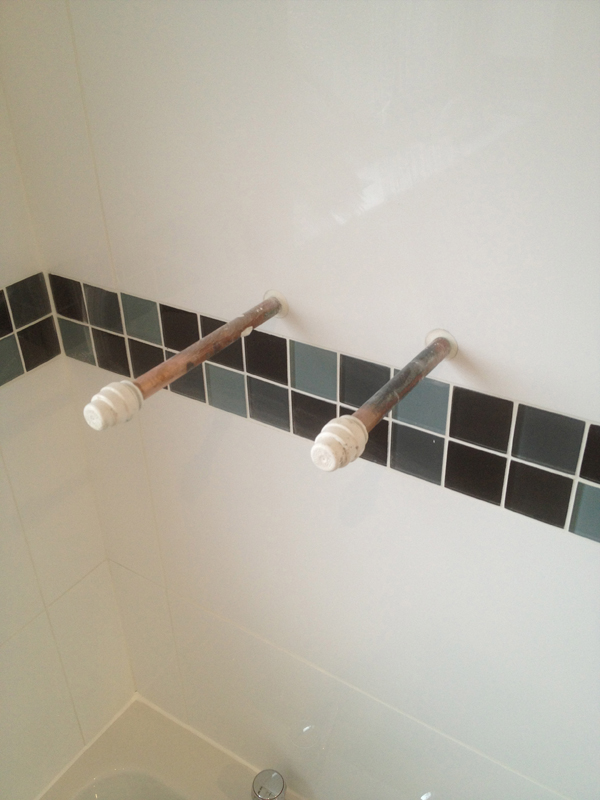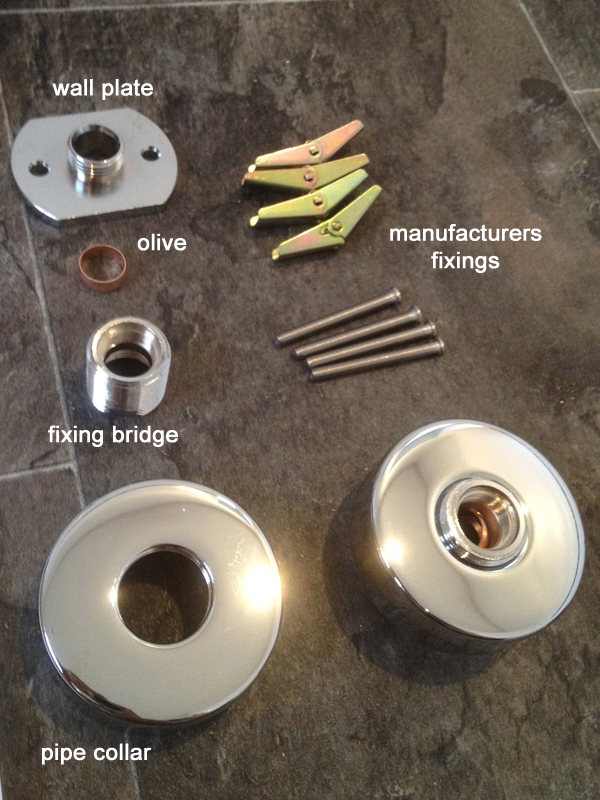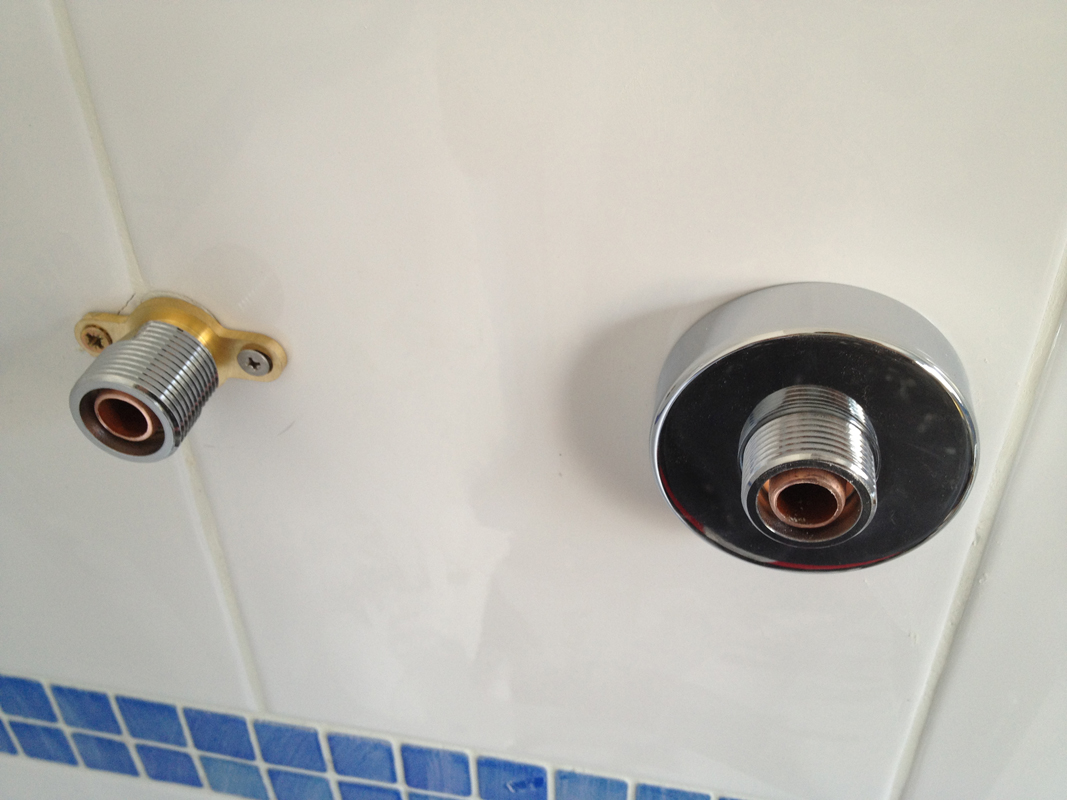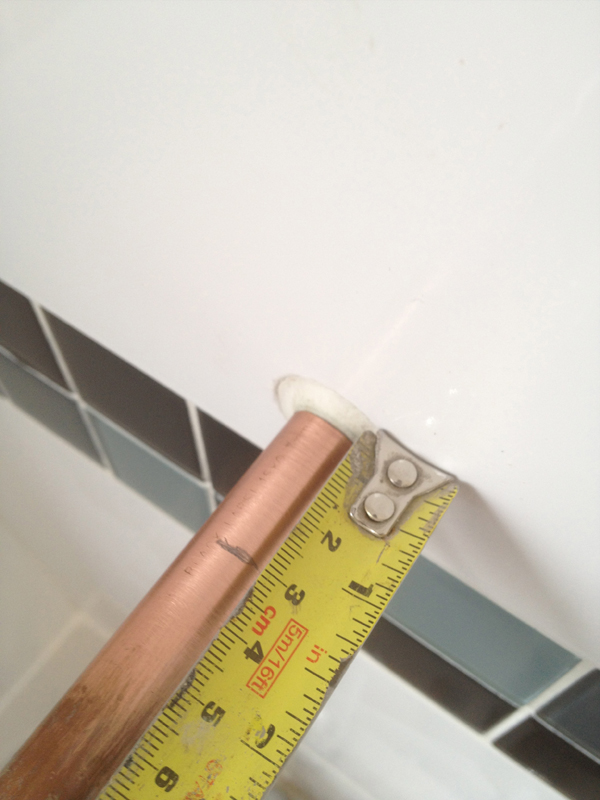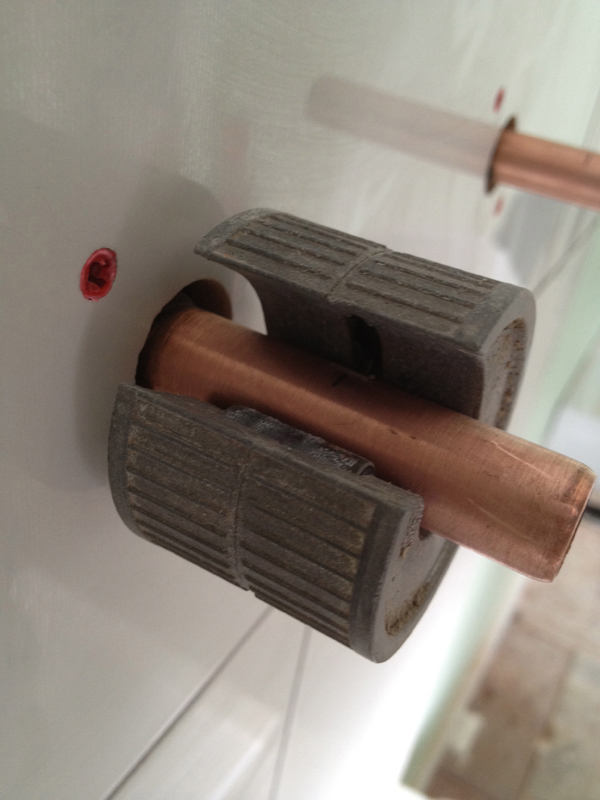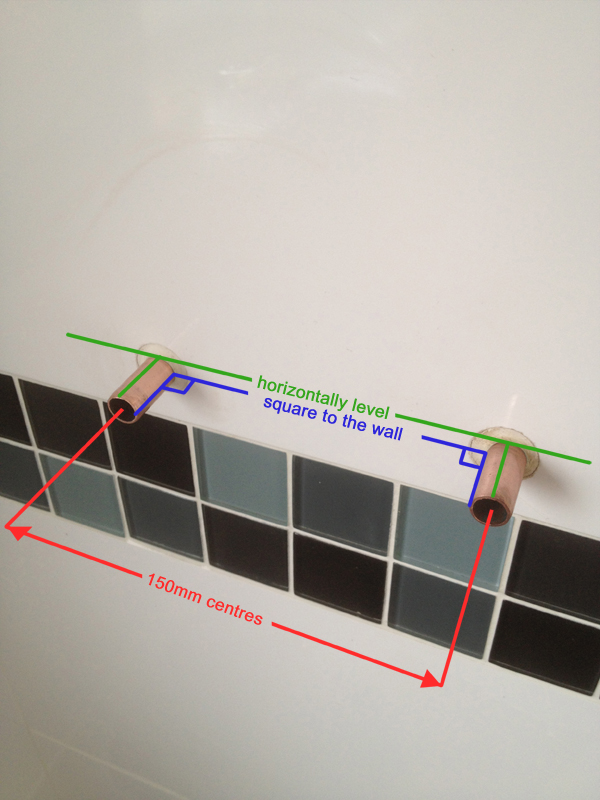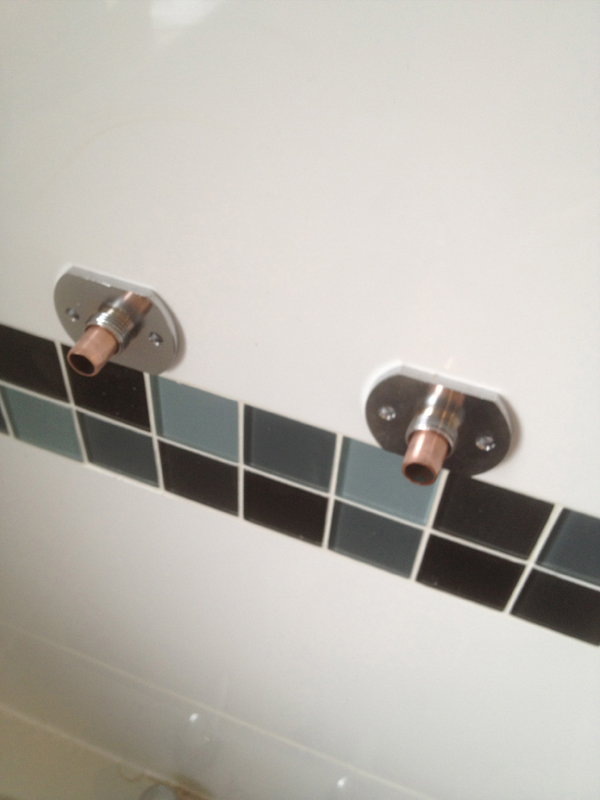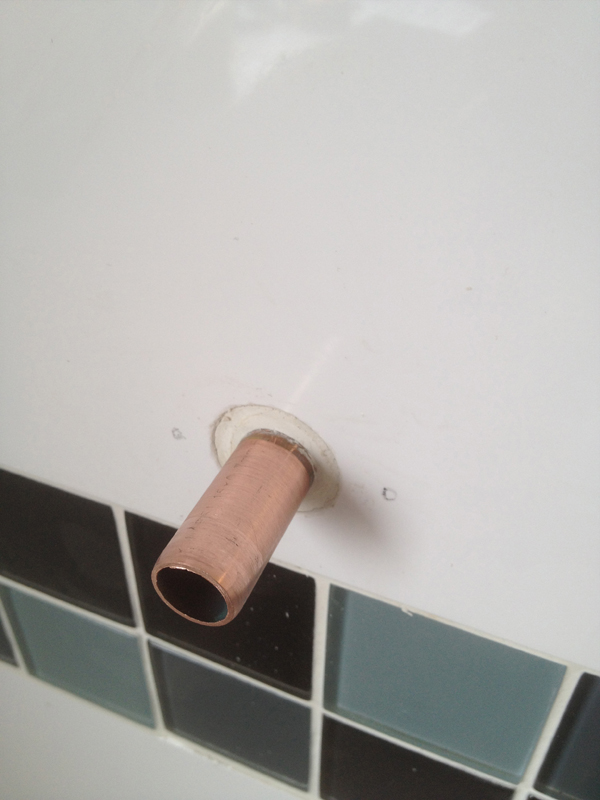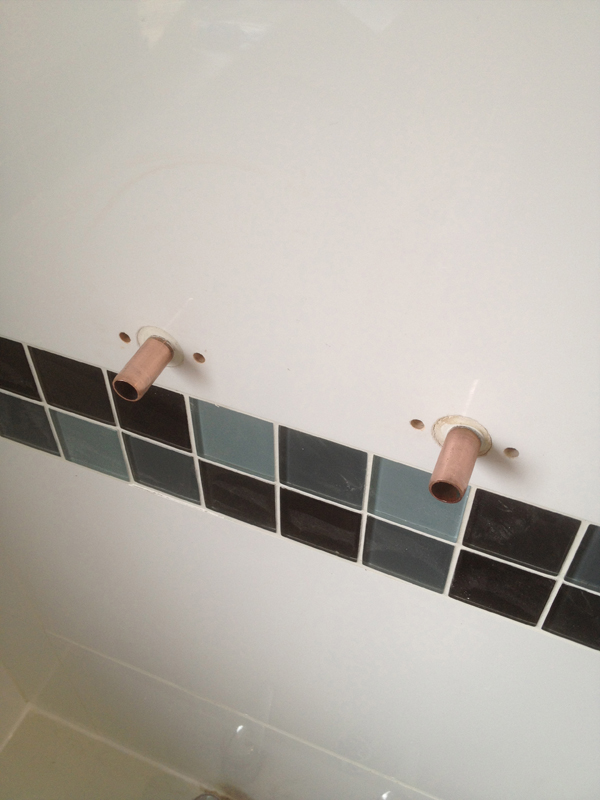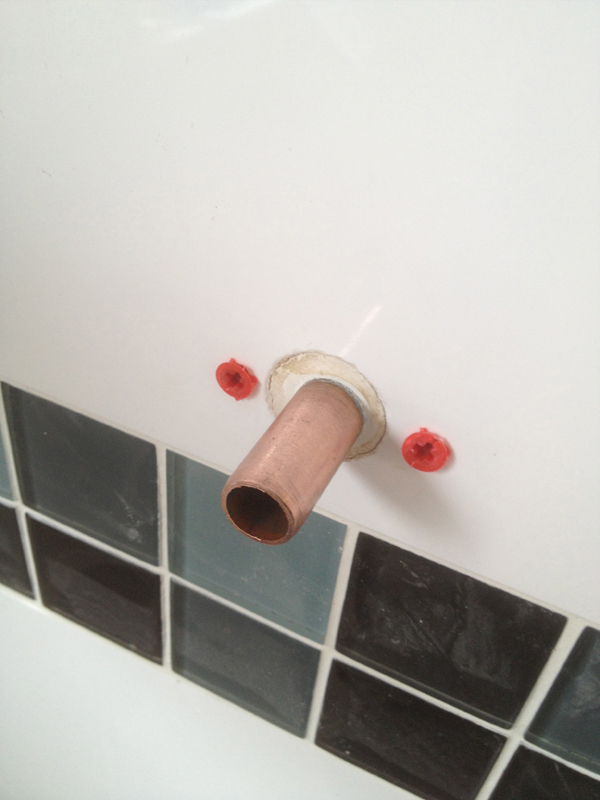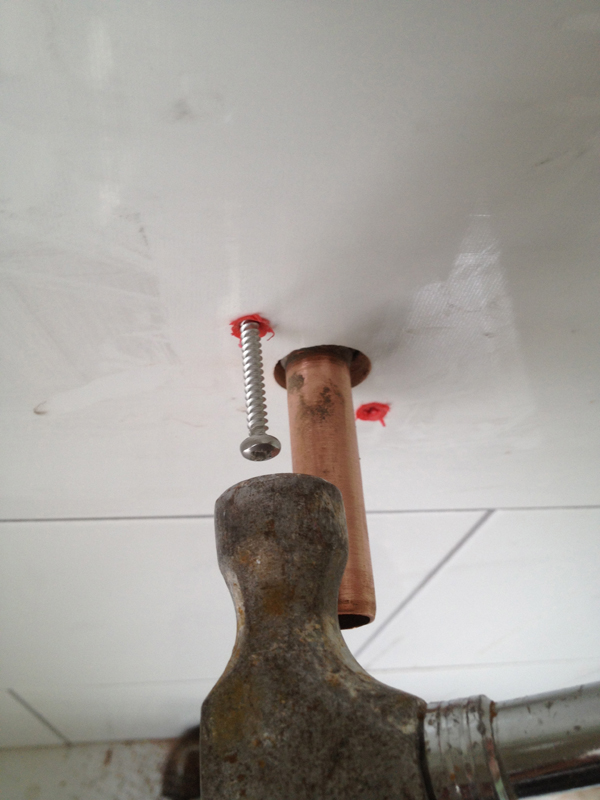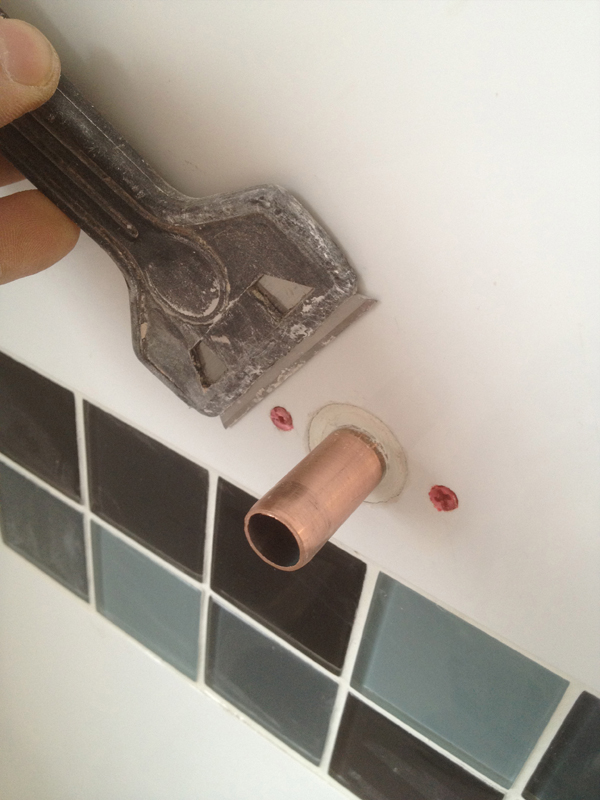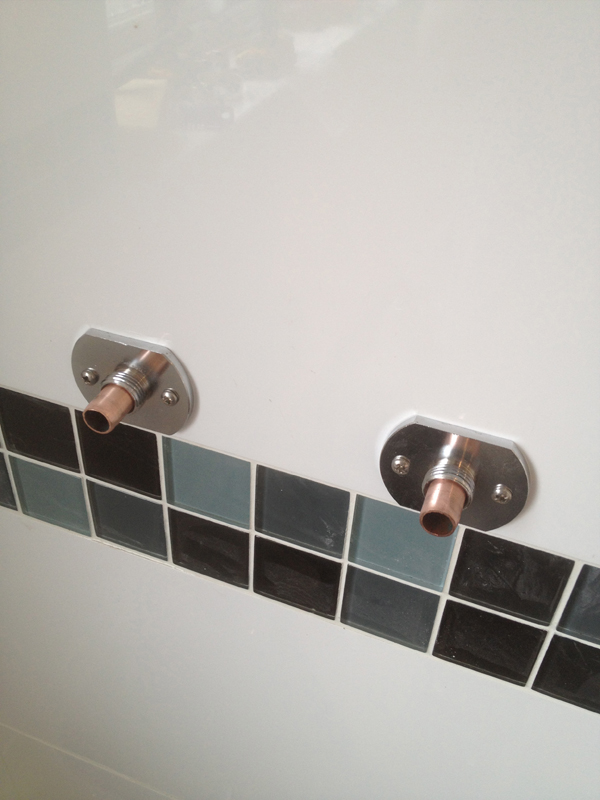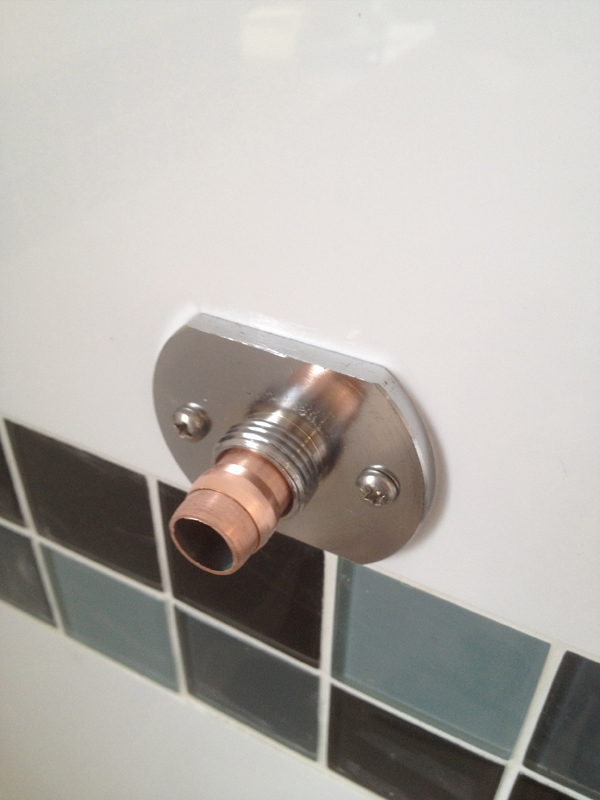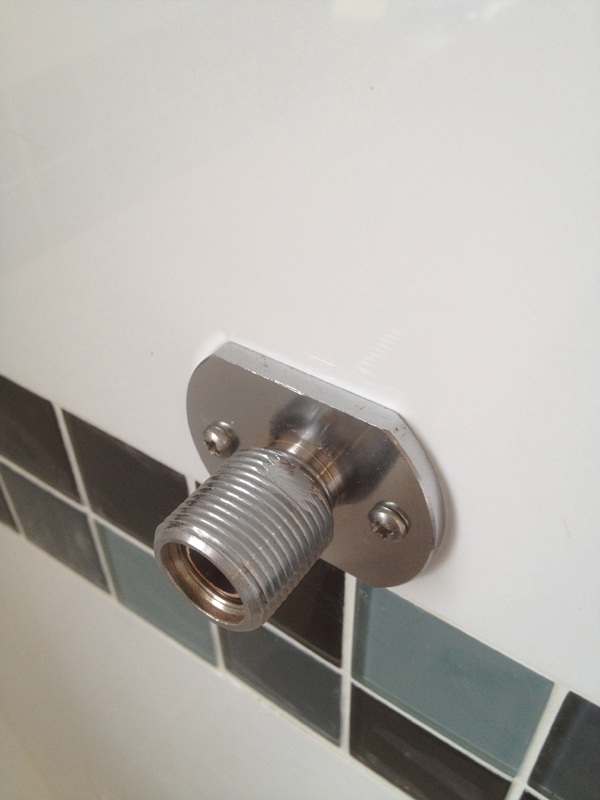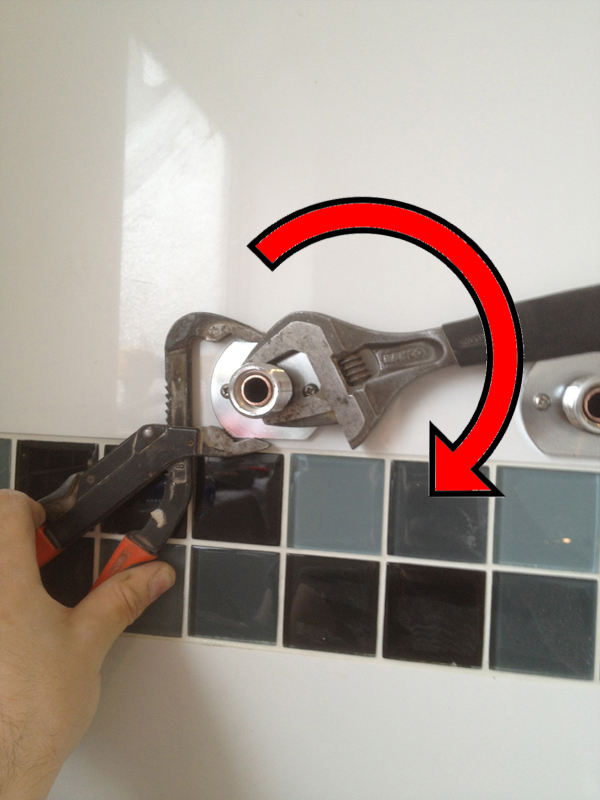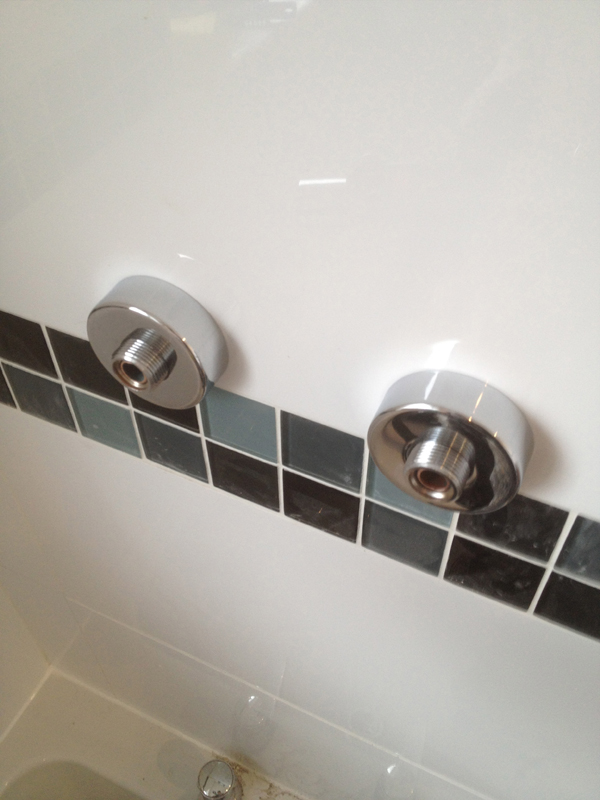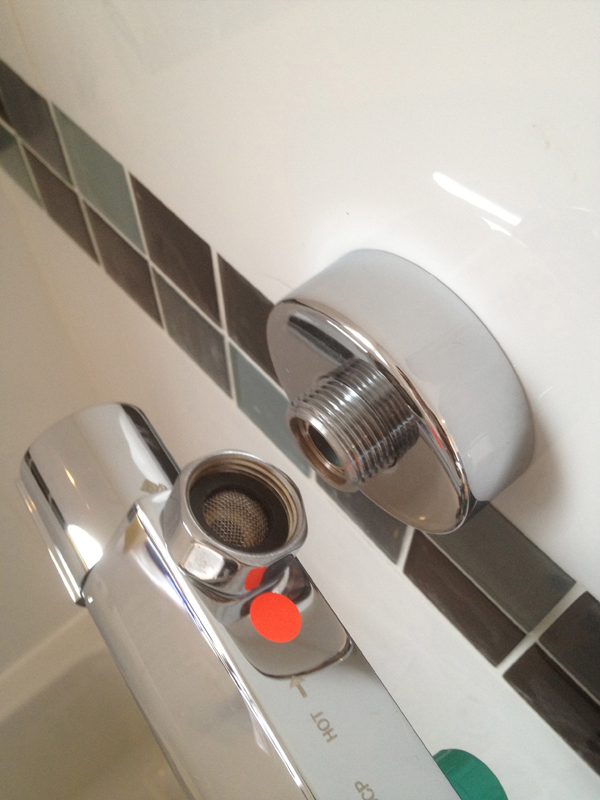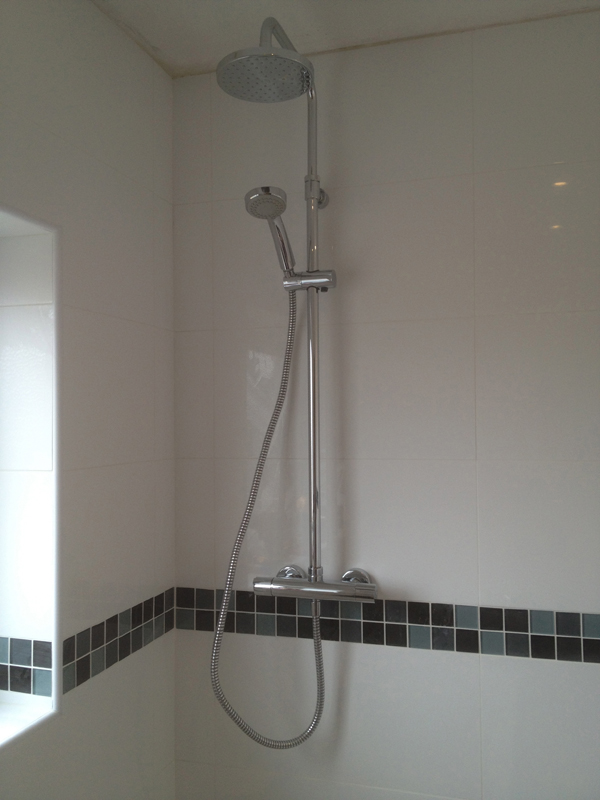This article follows on from the article How to fit bar mixer shower pipework (which explains how to carry out 1st fix pipework) and explains how to use a simple kit to attach any standard bar mixer shower onto the pipework in the wall.
Introduction
You should now have 2 15mm copper pipes protruding from the wall at the intended location of the thermostatic bar mixer valve (hot on the left, cold on the right) at 150mm centres. These pipes should also be level and square to the wall, which should now be fully tiled & grouted. Use silicon to seal around the pipes, and use a fugenboy to finish it off flush with the wall.
Tips of the trade
Ensuring you get the 1st fix pipework perfect will make 2nd fixing easier.If your 1st fix pipework is not quite correct e.g. 151mm centres with one pipe 1mm higher than the other one, I recommend you look at this Mira bar valve fixing kit instead.
Bar valve fixing kit
This article will show you how to attach your shower valve onto the pipework using this fixing kit, available from Amazon and a few other places – there are a few variations such as the one shown here but they are all similar in the way they work.
For:
- Cheapest bar valve fixing kit available – around £25.
- Water connections are made in front of the finished wall surface (unlike traditional ‘Z’ connectors)
- Bar valve is secured to the wall which makes the installation more secure than some other methods.
- Suitable for any bar valve using 3/4” female threads
Against:
- No centre and levelling adjustment – rely heavily on accurate 1st fixing of pipework (unlike this one)
- No seal on the reverse to prevent water ingress so pipe holes in the tile must be sealed separately.
Ensure that the water is turned off and the pipes are drained.
Remove the temporary stop ends and clean both pipes using wire wool or plumbers mesh strips.
The next task is to ensure that the pipes protrude out from the wall the correct amount according to the manufacturers’ instructions – In this case, a distance of 30mm is marked – a steel ruler is sometimes easier than a tape measure.
The pipes are then cut using a pipe slice to ensure a square cut and the ends are then de-burred.
You should now be left with this.
The wall plates are then slid over the pipes (both are the same) and the holes to be drilled are marked.
Tips of the trade
If you put a small scaffold level across the wall plates (resting on the flat edge) you will ensure that the holes to be drilled are at either side of the pipework buried within the wall i.e. 3 o’clock & 9 o’clock on a clock face.If you drill the holes above each other at 12 o’clock &6 o’clock you may hit the supply pipes underneath the tiles!
The holes are then drilled using a 6mm tile drill bit as shown. This type of drill bit is excellent for drilling ceramic tiles as its sharp arrow head design ensures it does not skid off the tile surface even without applying masking tape to the surface 1st.
PS If you have porcelain tiles (or another type of hard tile) you may need a more specialist drill bit.
Red uno rawl plugs plugs are then inserted into the holes as shown.
I never use the fixings that come with these types of kit – they are always inferior and the screws always end up turning the wall plugs – this also applies to fixing curtain poles and just about anything else to be honest.
Tips of the trade
Be careful when hammering the wall plugs in and use a suitable sized hammer – you don’t want to swing and miss and smash a tile.If the holes are near the edge of the tile or the tiles are very thin, you might be better hammering the wall plugs into the brick wall behind if possible. This ensures that when the screw is tightened into the wall plug the expansion pressure doesn’t crack the tile as it is exerted into the brick surrounding the drilled hole rather than the tile itself.This is done by inserting the plug so that it is as shown above and then inserting a screw 5mm into the fixings before gently hammering it through to the wall behind, ensuring that it is not too deep in the wall for the screws you will be inserting.
Assuming you haven’t hammered the plugs through to the brick wall behind, the ends are trimmed off using a stanley knife holder to ensure that the wall plates can sit flush against the tiled wall.
The wall plates are then screwed to the wall using the screws provided until tight. You may wish to add a small amount of silicon to the back side of the wall plate to ensure a waterproof seal.
Ensure you select the correct screwdriver head to do this to reduce the likelihood of stripping the screw head.
Do not use a drill to do this! You will fire the screws in with far too much power and crack the tile.
Slide the olives over the pipes and then screw on the fixing bridge by hand.
You next need to tighten the fixing bridge against the wall plate. This will crush the olive against the copper pipe and form a watertight seal.
To do this, use an adjustable spanner to grip the fixing bridge on the faceted (flat) edge and turn it clockwise.
Be sure to hold the fixing bridge firmly with a set of water-pump pliers (or similar tool) to ensure that you are not putting undue stress on the wall plate fixing screws (which could lead to cracking of the tiles) as you tighten the fixing bridge up.
Tips of the trade
As with all compression fittings, knowing how much to tighten up the fitting to ensure a watertight seal is something that comes with experience, but if you find the spanner slipping off the fixing bridge, chances are it’s already tight enough – Do not over tighten!Now is the time that you may wish to add some 3/4 brass cap with a rubber washer inside to act as a stop end and turn the water on. If either of the compression joints are leaking, they may need to be ‘nipped up’ a little more before progressing.
Now is also the time to flush out the pipes if you did not do this at 1st fix stage (when you first put the pipes in)
After testing & flushing, turn the water back off to complete the installation of the bar mixer shower valve.
Screw the pipe collars onto the fixing bridge thread until they meet the tiled wall. These serve the hide the unsightly mechanism within.
Attach the bar mixer shower to the fixing bridge as shown, ensuring that all necessary rubber washers and filters are in place. These should come with the shower valve. Take care not to damage the chrome plated surfaces.
PS Sometimes the filters that come with the shower valve are not flat and subsequently do not fit correctly, so separate filters have to be bought. This varies from shower valve to shower valve.
This is the stage at which you will know whether your 1st fix pipework was accurate enough as this fixing kit allows for no adjustment what-so-ever. As I mentioned earlier in the article, if your pipework is not accurate, then Mira bar valve fixing kit has a greater tolerance as it is adjustable.
Attach the riser rail to the wall with the same drill -bit & wall plugs and you have now finished.
Tips of the trade
PS Be sure to attach the shower hose &head to the valve when setting the height of the riser rail to ensure everything fits together properly.

